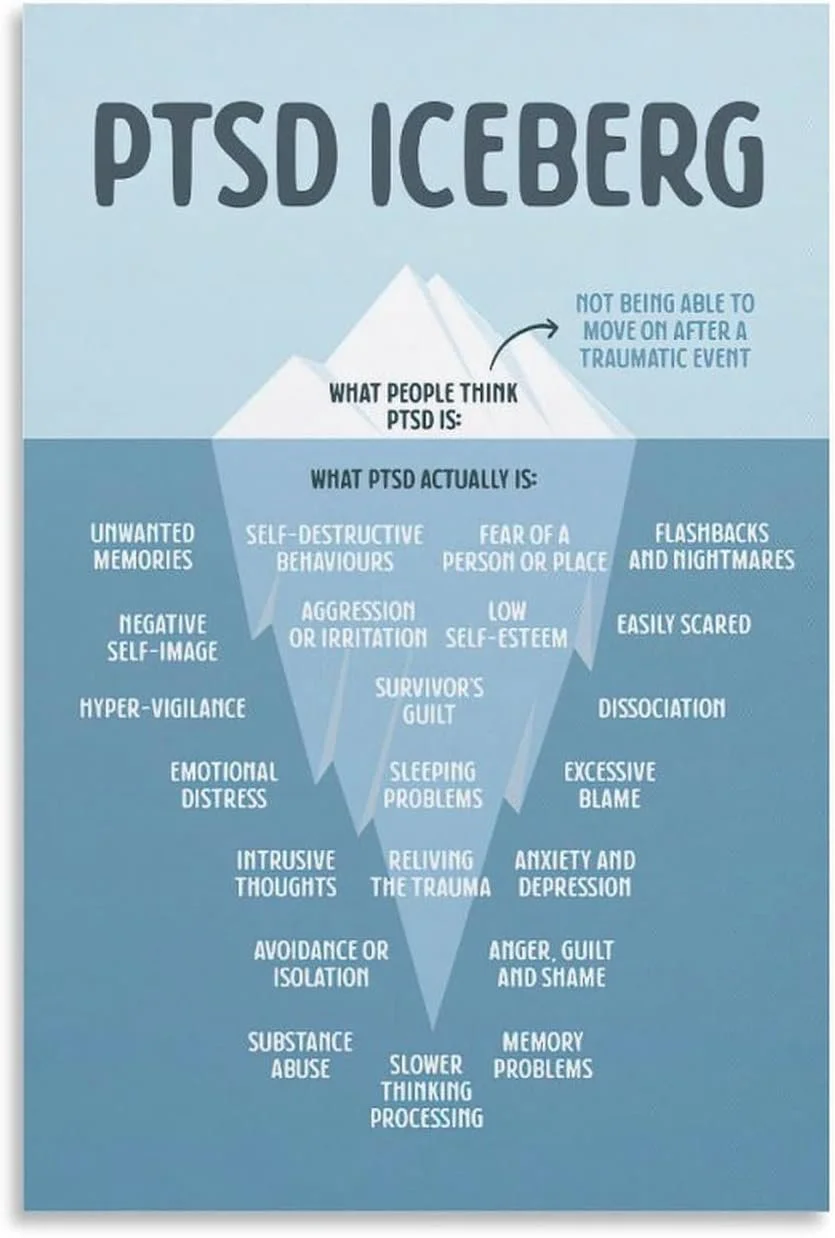PTSD: More Than Meets the Eye
Posttraumatic Stress Disorder (PTSD) occurs after experiencing or witnessing a traumatic event, causing significant distress and problems in daily functioning.
Examples of traumatic events include:
Combat or military-related trauma
Sexual trauma or assault
Religious trauma
Relationship abuse or neglect
Medical or emergency trauma
Serious accidents
PTSD is often like an iceberg—what others see on the surface is only a small part of what you’re carrying. The heaviest parts of your experience remain hidden underneath. I’m here to help you safely explore those deeper layers with evidence-based care, compassion, expertise, and support, so you don’t have to navigate them alone.

